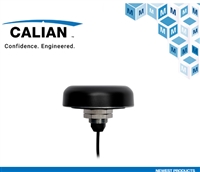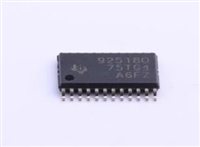| 是否无铅: | 含铅 | 生命周期: | Obsolete |
| 零件包装代码: | DIE | 包装说明: | DIE, |
| 针数: | 117 | Reach Compliance Code: | unknown |
| 风险等级: | 5.84 | 地址总线宽度: | 16 |
| 桶式移位器: | NO | 边界扫描: | YES |
| 外部数据总线宽度: | 16 | 格式: | FIXED POINT |
| 内部总线架构: | MULTIPLE | JESD-30 代码: | R-XUUC-N117 |
| 低功率模式: | NO | 端子数量: | 117 |
| 最高工作温度: | 70 °C | 最低工作温度: | |
| 封装主体材料: | UNSPECIFIED | 封装代码: | DIE |
| 封装形状: | RECTANGULAR | 封装形式: | UNCASED CHIP |
| 认证状态: | Not Qualified | 标称供电电压: | 3.3 V |
| 表面贴装: | YES | 技术: | CMOS |
| 温度等级: | COMMERCIAL | 端子形式: | NO LEAD |
| 端子位置: | UPPER | uPs/uCs/外围集成电路类型: | DIGITAL SIGNAL PROCESSOR, OTHER |
| Base Number Matches: | 1 |
| 型号 | 品牌 | 获取价格 | 描述 | 数据表 |
| TMP320C50KGDL80C | TI |
获取价格 |
Known Good Die(Only) 0-XCEPT 0 to 70 |

|
| TMP320C50KGDL80C | ROCHESTER |
获取价格 |
Digital Signal Processor, 16-Ext Bit, CMOS, DIE-117 |

|
| TMP320C51HQ | ETC |
获取价格 |
16-Bit Digital Signal Processor |

|
| TMP320C6000GDP167 | TI |
获取价格 |
FLOATING-POINT DIGITAL SIGNAL PROCESSOR |

|
| TMP320C6000GDP200 | TI |
获取价格 |
FLOATING-POINT DIGITAL SIGNAL PROCESSOR |

|
| TMP320C6000GDP225 | TI |
获取价格 |
FLOATING-POINT DIGITAL SIGNAL PROCESSOR |

|
| TMP320C6000GDPA167 | TI |
获取价格 |
FLOATING-POINT DIGITAL SIGNAL PROCESSOR |

|
| TMP320C6000GDPA200 | TI |
获取价格 |
FLOATING-POINT DIGITAL SIGNAL PROCESSOR |

|
| TMP320C6000GDPA225 | TI |
获取价格 |
FLOATING-POINT DIGITAL SIGNAL PROCESSOR |

|
| TMP320C6000PYP167 | TI |
获取价格 |
FLOATING-POINT DIGITAL SIGNAL PROCESSOR |

|
 摩尔斯微电子在美国约书亚树国家公园测试 Wi-Fi HaLow
摩尔斯微电子在美国约书亚树国家公园测试 Wi-Fi HaLow

 贸泽上架Tallysman TW5386智能GNSS天线
贸泽上架Tallysman TW5386智能GNSS天线

 SL74HC10N:高性能三输入与非门解析
SL74HC10N:高性能三输入与非门解析

 AIC1781A 电池充电控制器深度解析
AIC1781A 电池充电控制器深度解析
